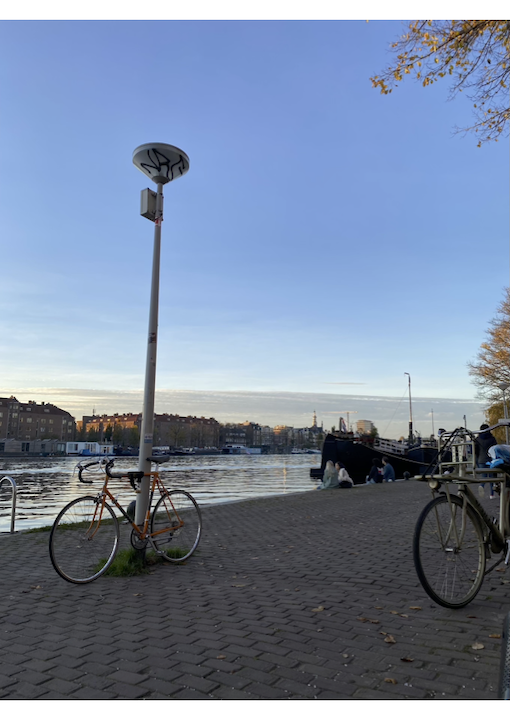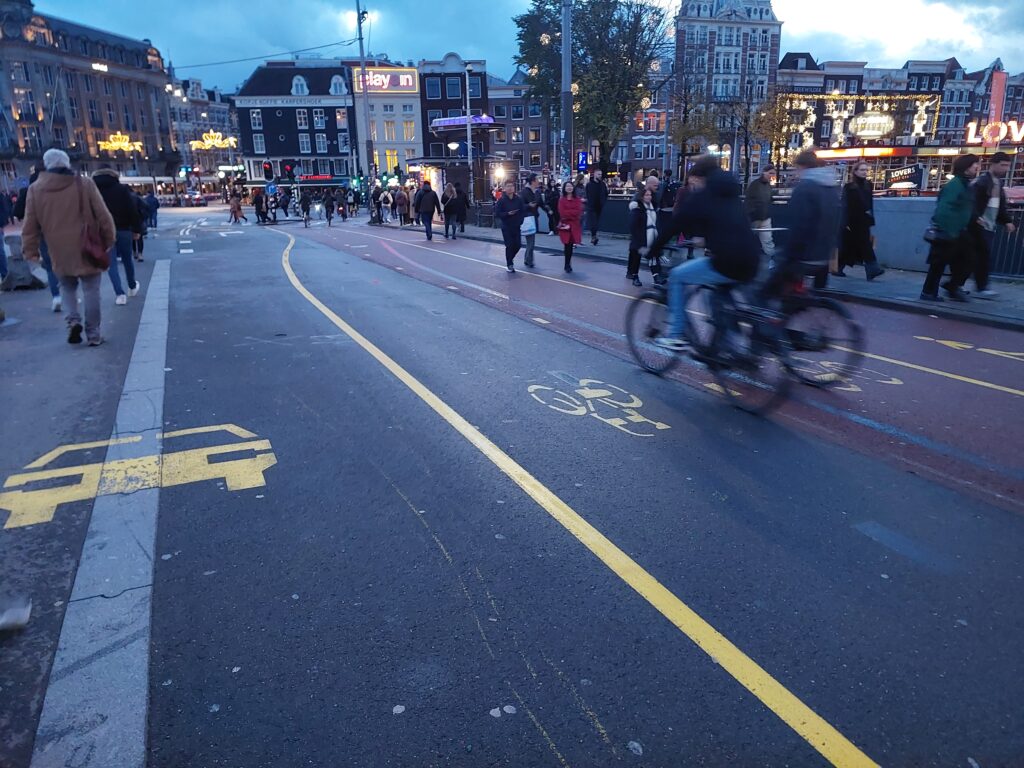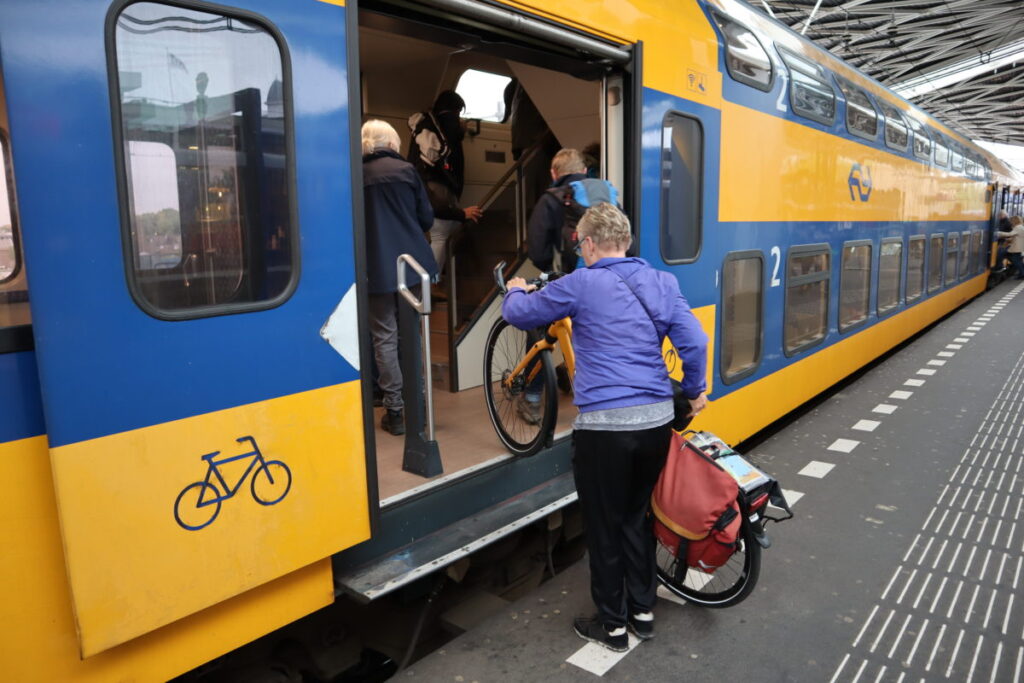Ing. J.M. ten Bosch Msc IM | LinkedIn
Selected final essay, published 13 September 2020
Managing Director and co-owner of Debatrix
Unraveling the Cycling City MOOC on Coursera
Is a cyclist a slow car or a fast pedestrian? It is a question with large implications. Defining a cyclist as a slow car means it should have to adhere to strict safety and traffic rules, while defining a cyclist as a fast pedestrian will give the cyclist more freedom in movement. For urban planners this makes a huge difference, but the definition also has implications to less obvious domains, such as our language. To solve this puzzle, we require not only a new toolset for urban planners. We need a new language of cycling for society as a whole.
Car Centric Words
Let’s face it, we live in a car centric world and our language reflects it. Take for instance a word like ‘sidewalk’. The word itself makes very clear which mode of transport has the centre-stage. Or what about ‘highway’? According to the historian Rupert Matthews the term Highway seems to have emerged in the 12th century when the word ‘high’ began to be used to indicate something or someone of a higher, or more important, status than others. (Matthews, 2011) If one would happen to cross this highway or a smaller street one may be called a ‘jaywalker’. Derived from the word jay, an inexperienced person and a curse word that originated in the early 1900s. (The American Heritage Dictionary of the English Language, 2000) Our language has a pro-car undertone.
Urban planners have chosen to place cyclist in the ‘slow car’ bracket and their language reflects this. In the study by Liu et al. (2019) on dedicated bikelanes, urban planners in the UK and Copenhagen referred to these roads as ‘Cycle Superhighways’ while Germany called them a ‘Radschnellweg’.
However, Forsyth & Krizek (2011) clearly state that there is a need for a distinct view on the cyclist, since “cyclists have needs from the standpoint of urban design that substantially differ from pedestrians, motorists or transit users.” A new language for cyclists is needed.
The language we live by.
“Sticks and stones may break my bones
Cupples, 1872
But names will never harm me.”
We have always been told that language is harmless. However this is far from the truth. An ever growing field of research shows how the language we use shapes our attitudes and thinking. In the cognitive sciences one of the major paradigms to understand our thinking is the use of unconscious structures called ‘frames’. The language, semantics, the associations and roles define the meaning we give to words.
For instance, in the immigration debate some people use the ‘water-frame’ by referring to ‘waves’ or even a ‘tsunami’ of immigrants. This frame naturally invokes ‘water-frame’-solutions such as building walls or dams to protect the inland from an imminent flood.
These structures are physically realized in neural circuits of our brains. All of our knowledge makes use of frames, and every word is defined through the frames it neurally activates (Lakoff, 2010). Even as you are reading these words. The frames in your mind influence the way you feel and even how you analyse this paper. In short, one cannot avoid framing.
Sparrows or Geese
A new frame and language for cycling planning is needed. In the Netherlands it emerges as te Brömmelstroet (n.d.) makes clear in his article on ‘The Handicap of a Head Start.’ Urban planners used to look at cyclists as slow cars and treated them like geese (eg. Moving in an orderly fashion from point A to point B in the most efficient manner possible). Thanks to experiments with intersections without traffic signals, planners discovered that cyclists could safely crisscross through each other’s paths like pedestrians would move on a public square (Glaser, 2017). Like a flock of sparrows, they coordinate their movements by exchanging micro-information with each other about their own direction and speeds (te Brömmelstroet (n.d.)).
According to Laikoff (2010), there are limited possibilities for changing frames. Introducing new language is not always possible. The new language must make sense in terms of the existing system of frames. It must work emotionally and it must be introduced in a communication system that allows for sufficient spread over the population, sufficient repetition, and sufficient trust in the messengers.
Interestly enough, in the study of Liu et al. (2019) the Dutch urban planners didn’t refer to the dedicated bike lanes a ‘cycle super highway’, they called it the ‘RijnWaalpad’. The word ‘pad’ is associated with pedestrians.
Yet, while the fast-pedestrian frame will most probably suit the cyclist better, it is still not the dedicated language needed to facilitate this mode if it aims to topple the car-centric frame. As urban planners and cycling specialist discover new ways to work together and develop better infrastructure and environments for cyclists through pattern language (te Brömmelstroet, et al. 2018) An actual new language is needed to describe the cycling phenomenon for society as a whole.
Literature
- te Brömmelstroet, M. (n.d.). The Handicap of a Head Start. Retrieved from https://urbanstudies.uva.nl/content/blog-series/the-handicap-of-a-head-start.html
- te Brömmelstroet, M., Nello-Deakin, S., Quillien, J., & Bhattacharya, I. (2018). Towards a pattern language for cycling environments: merging variables and narratives. Applied Mobilities. https://doi.org/10.1080/23800127.2018.1505261
- Cupples, Mrs. George (1872). Tappy’s Chicks: And Other Links Between Nature and Human Nature (1872). London: Strahan & Co. p. 78.
- Forsyth, A., & Krizek, K. (2011). Urban Design: Is there a Distinctive View from the Bicycle? Journal of Urban Design, 16(4), 531–549. https://doi.org/10.1080/13574809.2011.586239
- Glaser, M. (2017, September 22). What happens if you turn off the traffic lights? The Guardian. Retrieved from https://www.theguardian.com/environment/bike-blog/2017/sep/22/what-happens-if-you-turn-off-the-traffic-lights
- Lakoff, G. (2010) Why it Matters How We Frame the Environment, Environmental Communication, 4:1, 70-81, DOI: 10.1080/17524030903529749
- Liu, G., te Brömmelstroet, M., Krishnamurthy, S., & van Wesemael, P. (2019). Practitioners’ perspective on user experience and design of cycle highways. Transportation Research Interdisciplinary Perspectives, 1, 100010. https://doi.org/10.1016/j.trip.2019.100010
- Matthews, R., (2011) https://www.historyextra.com/period/high-street/
- Webster, M., (2017) “Why Jaywalking is Called Jaywalking”. Merriam Webster. Retrieved 2017-09-10.
- The American Heritage Dictionary of the English Language. Fourth Edition, 2000.



